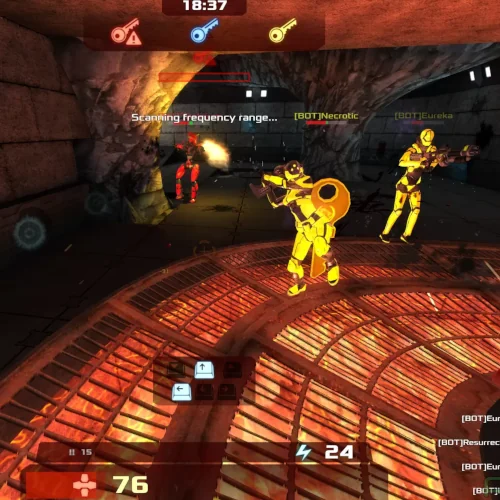Unigine Pushes Engine Changes; More Mesa Friendly

The changes to the latest revision of the Unigine Engine can be read on their devlog. Some of the points that stick out include:
- Optimizations within the renderer.
- Configurable blending modes for terrain materials.
- Improved performance of dynamic vertex/index buffers on open-source drivers in Linux.
- Support for vertical synchronization on Linux.
- The renderer checks for EXT_texture_compress_s3tc on start-up to help the Mesa open-source drivers.
- Increased default shadow bias and slope parameters for light sources.
- Separate diffuse and specular color multipliers.
- Various Unigine Script improvements.
- GUI fixes.
- Many Unigine Editor improvements, including Maya 2012 plug-ins.
- Unigine Tracker has been introduced as a keyframe-based tool for creating sequences animated over time, to allow for "adding dynamic gameplay elements or making in-game cinematic cutscenes" with various benefits for the developers.
This is quite a healthy update to the already first-rate Unigine Engine. The Linux-specific work is also always pleasant to see, and especially the ongoing work to make this visually-stunning-but-demanding engine work with the open-source Mesa/Gallium3D drivers.
Seeing multiple Mesa-targeted improvements here is great. If enabling patented S3TC support via the external library, building Mesa with the patented texture-float support, and applying a few driconf options it's becoming possible to run the Unigine Engine on a few open-source drivers with mostly-correct rendering. However, the performance is still at a snail's pace, especially considering that even the proprietary NVIDIA/AMD graphics drivers tend to be stressed a lot by this engine (you can see a range of graphics cards running with Unigine benchmarks in my Radeon HD 7950 Linux review).
The Unigine Engine advancements are also important as when it could soon be facing much competition or interest from those interested in high-quality Linux game engines. Assuming the Source Engine with its Linux launch titles are shipping soon (should have more details to hopefully be able to share publicly on that when I'm out there at Valve in just over two weeks), the Unigine Engine will finally have some competition for being the most high-end Linux game engine. It will be interesting to see how the Source Engine and Unigine Engine battle it out under Linux in terms of performance and visual richness, of course with many Phoronix Test Suite benchmarks in the process.
If Valve's Linux efforts go well and reach a fair amount of success, it could finally push id Software to getting its idTech5-based Rage Linux client out the door. Who knows, if the Linux gaming experience was really lucky, maybe Unreal Engine 3 would make its long-awaited Linux debut, but for now that's a pipe-dream. Valve's native Linux play could as well end up being a last-stand for the viability of AAA games on Linux.
It will be interesting to see how Unigine moves forward in the multi-platform space. Next week I'll also be following up with them concerning Unigine Valley that I'm already quite excited about.
12 Comments

